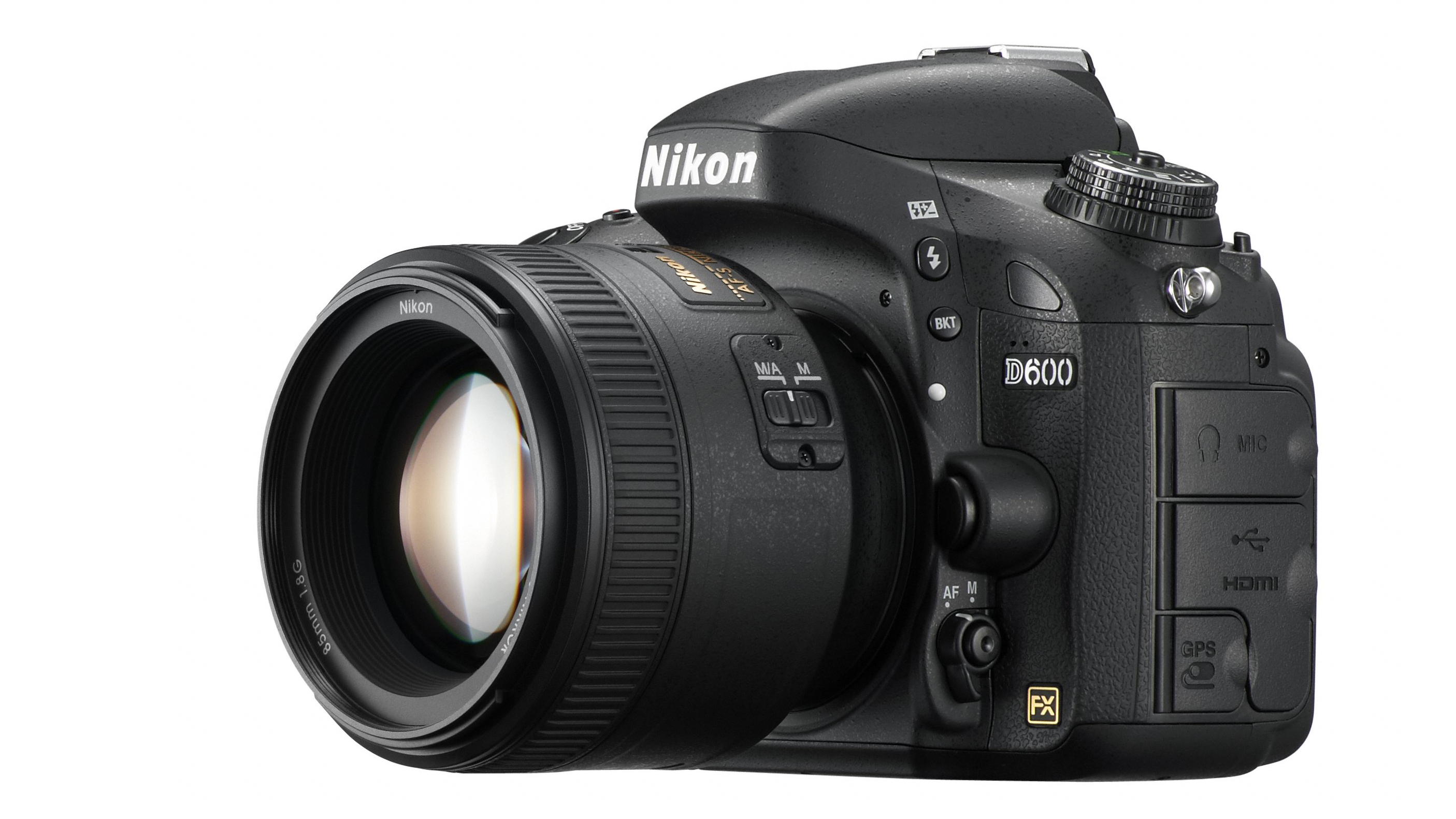Why you can trust TechRadar
We shoot a specially designed chart in carefully controlled conditions and the resulting images are analysed using DXO Analyzer software to generate the data to produce the graphs below.
A high signal to noise ratio (SNR) indicates a cleaner and better quality image.
For more more details on how to interpret our test data, check out our full explanation of our noise and dynamic range tests.
JPEG signal to noise ratio
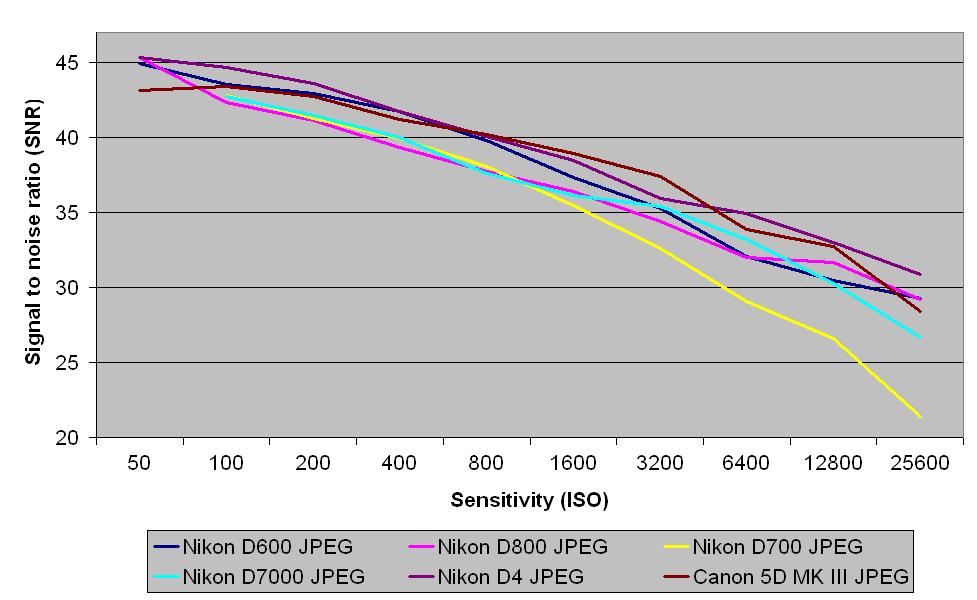
JPEG images from the Nikon D600 relate closely to those from the Nikon D800, Nikon D4, Nikon D7000and Canon EOS 5D Mark III for signal to noise ratio, with all cameras producing very similar results. The D600 shows a marked improvement on the D700 at the higher sensitivity settings.
Raw signal to noise ratio
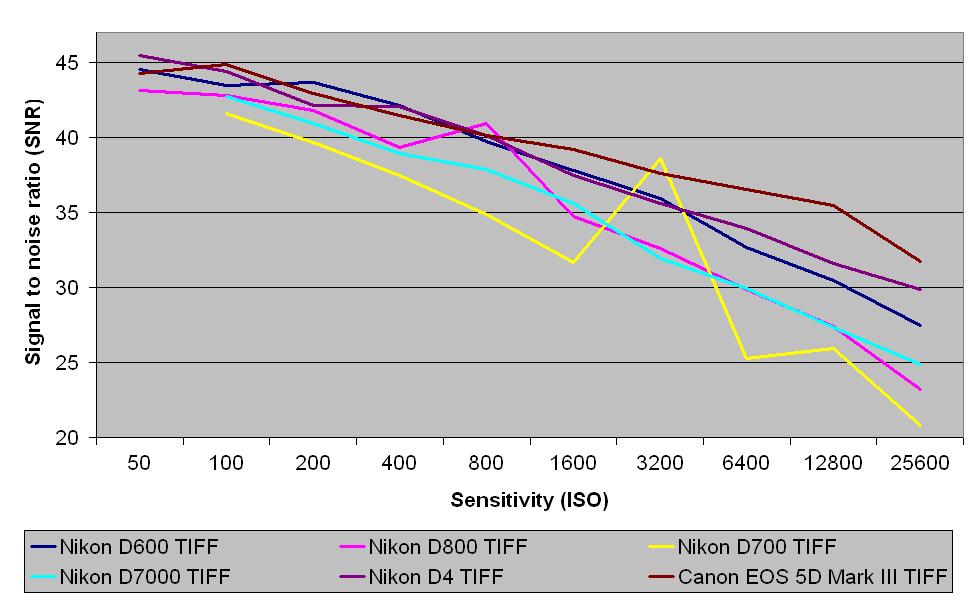
The signal to noise ratios of the TIFF images (after conversion from raw) from the Nikon D600 andNikon D7000 are very similar across the sensitivity range. The professional level Nikon D4 only just taking the lead at higher sensitivities.
The impact of the Nikon D800's higher pixel count makes itself clear with the lower signal to noise ratios across the sensitivity range.
JPEG dynamic range
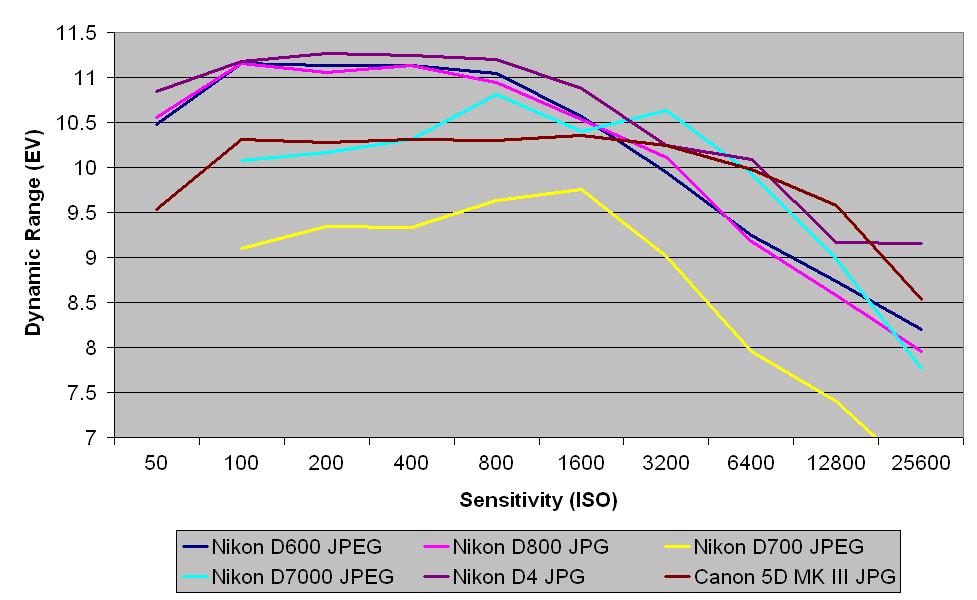
Our dynamic range results show that the D600 makes a huge leap in performance when compared with the D700, with results almost mirroring those of the Nikon D800.
Raw dynamic range
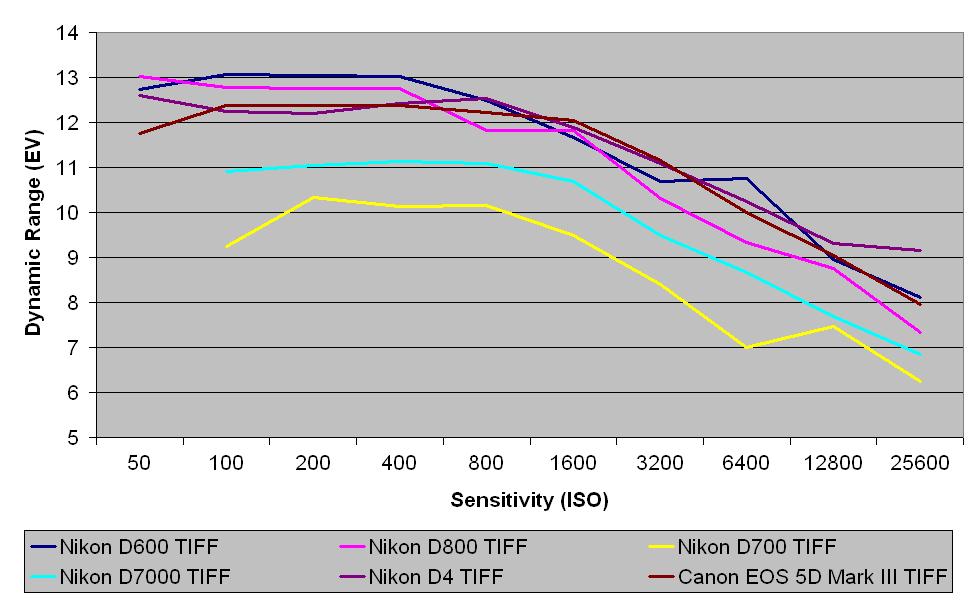
This chart indicates that TIFF images (after conversion from raw) from the Nikon D600 have a greater dynamic range than those from the Nikon D700 and Nikon D7000 and show results that are close to theNikon D800 and D4 and the Canon EOS 5D Mark III.
Current page: Noise and dynamic range
Prev Page Image quality and resolution Next Page Sample images